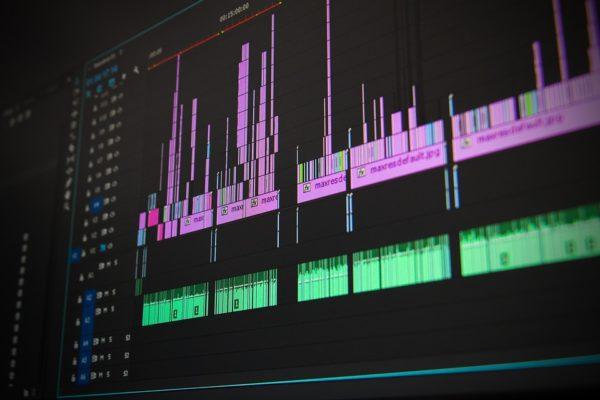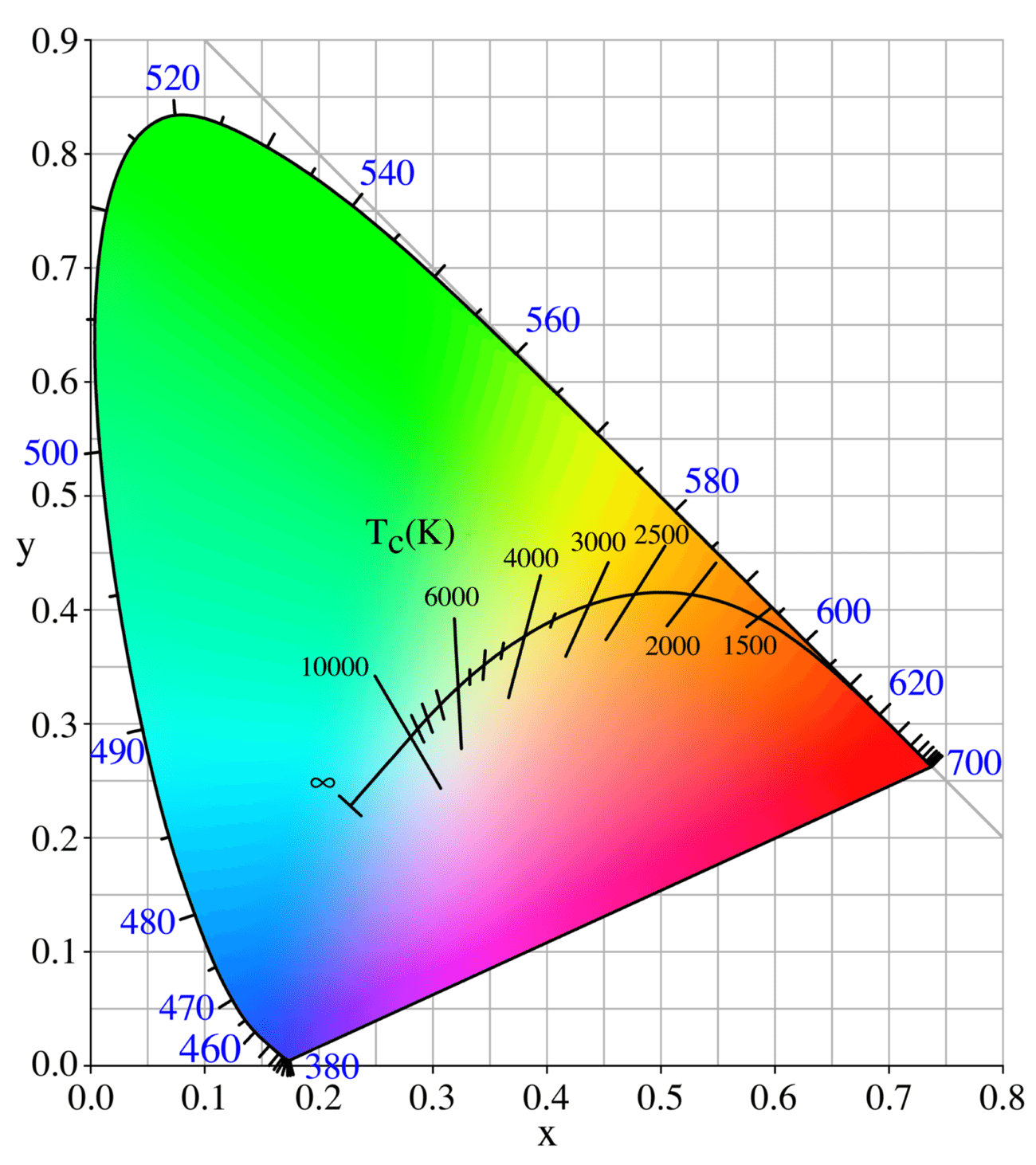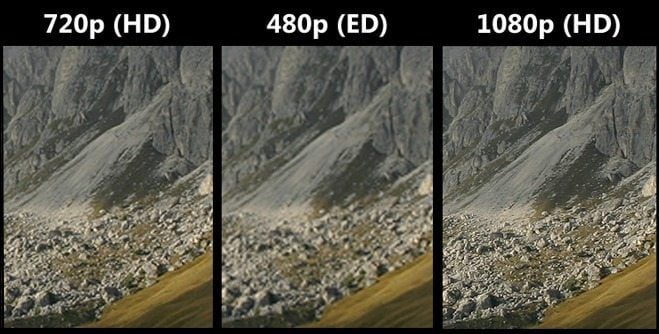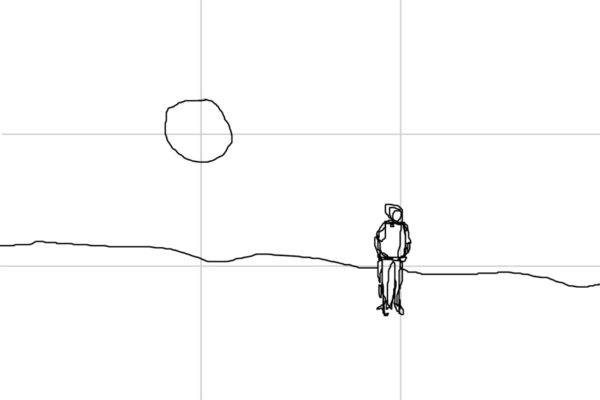What It Called When You Edit Something Over and Over Again

Here are the Common Video Editing Terms You Need to Know
Listed are the Peak thirty video editing terms you should know whether y'all are a professional or you are just commencement. Intertwined in this list, there are some broad video editing terms that refer to videography as a whole too as video editing terms specific to the process of editing footage.
Study up considering these video editing terms are important to know!
i) Aspect Ratio
Aspect ratio relates how the width and height of your video relate to each other. Those dimensions are expressed through a ratio.
Examples of the Most Common: 4:3, 16:9, i.85:one
Run across the epitome below for more examples of this video editing term.
2) B-ringlet
B-scroll gives y'all flexibility according to the video editing rules when editing because it is supplemental footage that makes a previously incongruent scene smooth.
B-roll tin can also provide more details to support the scene like in the news, wedding films, or interviews.
Say y'all were shooting footage of a person walking in a park and you wanted to shift into a new view of the subject. B-roll, like the image below in the park, tin be inserted to brand the transition easy on the eyes.

3) Bit Rate (Data Rate)
For every 2d in the video, the Flake Rate, or Information Rate, is the amount of information used each second. This is most commonly measured in kilobits per second (kbps). Kilobits per 2nd can be variable or abiding.
4) Close Upwardly
Close ups are shots that frame the subject tightly.
For example, if the discipline were a person, the close up would exist filled with their face.

v) Color Temperature
Color Temperature is measured in the unit of measurement Kelvin and the calibration ranges from absurd to warm.
This video editing term refers to the visible light in a shot.
For instance, cooler colour temperatures oftentimes take a bluish tint and hotter color temperatures tend to appear more red or orange.

6) Compositing
Compositing is used often when editing footage considering it is the process of combining multiple images using video editing software.
7) Compression
Pinch is the procedure of reducing the amount of information in a video file. This makes the uploading and downloading processes for your video much quicker. While information technology does take fourth dimension to compress your video, we recommend it because of the time you'll save late and leave you with more storage for more than videos!
viii) Crop Cistron
Ingather gene is a number (typically from 1.3-2.0) that represents the ratio of a sensor's imaging expanse to that of a full frame sensor. Endeavor multiplying the focal length of your lens by your camera sensor'south crop factor. Information technology will requite you the focal length for the lens/sensor combination! Cool right?
9) Cut-in (Insert Shot)
Cut-in is a type of shot that most oftentimes shows the objects the subject is in contact with or manipulating. Cutting-in shots are similarly helpful to b-roll because they stray from the field of study for a curt period of time.
10) Foley
Foley is when you reproduce and/or create sound for a moving-picture show. Often times, the bodily sounds of nature, chewing, etc. are not naturally captured, they are actually reproduced in a studio.
11) Frame Rate
The frame charge per unit is the rate that your shutter cycles through opening and endmost or when the sensor captures video in a one 2d period.
Common Frame Rate Examples: 24, 25, 29.97, xxx, l, sixty. The frame rate is expressed through frames per second (fps).
12) High Definition Media Interface (HDMI)
HDMI connectors digitally carry sound and HD video to a television. Make certain to get one of these if you desire to work from a larger screen or you want to share your product!
13) J-Cut
J-cuts are used when editing footage to take the audio from the side by side shot precede the video. J-cut is non short for jump cutting. The proper noun actually comes from the shape a j-cutting makes on your editing program's timeline.
14) Leap Cut
Jump cuts make your production wait apprentice because they are abrupt changes between sequential clips. The subject in a production that has spring cuts appears to jump across the screen from one spot to some other. The shots don't fit together and testify confusing to your audience.
15) L-Cutting
50-cuts are the exact opposite of j-cuts because the video is edited and then that the video'south image changes from one shot to another but the initial shot's audio continues into the adjacent prune. Similar a j-cut, an l-cut has its proper noun because of its appearance in the timeline of your editing software.
16) Lower Tertiary
The proper noun of this video editing term, Lower Third, derives from the Rule of Thirds. A Lower Third is a type of title used commonly by news broadcasters, YouTubers, vloggers, and interviewers. NewBlueFX makes great Lower Third titles for your production in all of their titling plugins. To learn more, click here!
17) Memory Bank
A memory bank is surprisingly non the same every bit a memory card or disc. Memory banks are more similar to a memory box in that they capture a certain time or event in someone's life. The difference is a memory bank does this through video, not by keeping the physical objects. Memory banks often use natural sounds, rather than foley, are set to music, document travel, or importantly, they tin can simply record moments in daily life.
18) Not-Linear Editing (NLE)
NLEs are non-destructive editing systems. In this example, the NLE performs predominantly on videos (NLVE) and audio (NLAE). The name, non-linear editing, takes its roots from linear video and moving-picture show editing from the 1900s.
19) Pans
Pans are fixed horizontal movements made with your camera. They are the opposite of tilts.
NewBlue Auto Pan recreates this effect.
20) Pixel Aspect Ratio
Pixels are the thousands of tiny squares (typically squares) that brand upward each epitome in your video. While attribute ratio is the ratio betwixt width and pinnacle of your video, PAR is the ratio between the width and height of the pixels.
Common PAR Examples: i:one
21) Press Kit
Your press kit will provide information about your product to the press so as to promote it. This information is typically background that tin can include the crew and cast's bios, a synopsis, Q&A with members of the coiffure such as the director, anecdotes, stills from your production, and reviews of it.
22) Resolution
Resolution refers to the actual number of horizontal and vertical pixels your video contains.
Common Resolution Examples: (SD) 640×480, (HD) 1280×720, (Hard disk drive) 1920×1080
Often times, the resolution is referred to by but the amount of pixels that appear vertically. The examples listed would announced as 480p, 720p, and 1080p respectively.

23) Shot List
The shot list is essentially a checklist of all the shots the videographer wants to include in the production. By planning shots alee of a shoot, yous can be more than efficient with your time and gear you lot may be renting which will relieve you lot time and money.
Your productions volition besides have a sense of direction and motion.
Shot lists also help you avoid breaking video editing rules covered in Intro to Video Editing (Part two).
24) Storyboard
A Storyboard consists of drawings that illustrate all of the scenes in your production. They are an organized and directly way to visualize what needs to be shot or animated.
25) Sync (Synchronization)
A production is synchronized when the audio aligns with the video imaging.
26) The Rule of Thirds
The Rule of Thirds is a helpful grid to go along in listen when shooting footage because it makes your production aesthetically pleasing. Imagine a tic-tac-toe lath aligned directly over your image. The filigree for the Rule of Thirds looks like a tic-tac-toe board because it separates the image into 9 separate sections.
The Rule of Thirds suggests that points of interest line up with the lines or intersections on the filigree.

27) Three-point lighting
Three-signal lighting is useful because 3 lights are prepare in a manner that eliminates the bulk of shadows to rest the epitome and have highly-seasoned contrast. The iii lights are ordinarily chosen make full, primal, and backlights.
28) Tilts
Tilts are vertical movements fabricated with your photographic camera that are fixed. Tilts are the contrary of pans.
29) White Balance
A proper white balance is characterized by the whites in an image truly beingness the color white. For case, in an improper white balance, the whites may accept tints of yellow, green, red, or some other color. White balance's formal definition is the procedure of gathering the accurate colors for the low-cal that is available. Your photographic camera may come with a white balance card and an motorcar white remainder feature.
xxx) Wide Angle
Wide angle lenses have short focal lengths with respect to the body of the lens. These lenses include more than of the field of study than a normal lens of the same size at equal distances (abroad from the subject field). Be enlightened, if yous are using a broad angle lens when filmmaking, your bailiwick may appear warped.
After you feel comfortable with these thirty video editing terms, you can proceed to acquire video editing terms at the following link: http://www.manifest-tech.com/links/video_terms.htm
For more helpful information like these video editing terms, bank check out the Intro to Video Editing weblog series! Whether you are a professional or an amateur, Intro to Video Editing will boost your skills to the next level!
These video editing terms are part of the Intro to Video Editing blog series. To learn more, select the "Intro to Video Editing" category and find more than articles like this one!
Source: https://newbluefx.com/blog/video-editing-terms/

0 Response to "What It Called When You Edit Something Over and Over Again"
Post a Comment